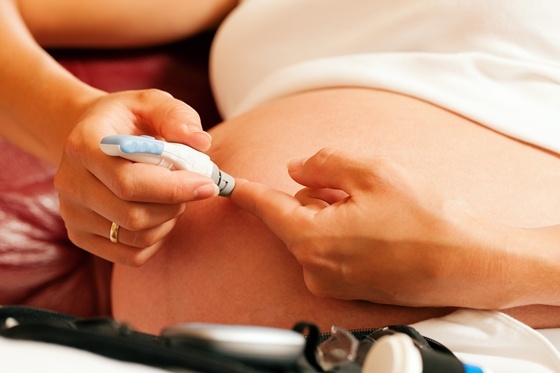
We’ve all heard of diabetes before – it’s the condition whereby the amount of glucose in the blood is at a dangerously high level. But did you know that you can develop a form of diabetes that is specific to pregnancy?
Gestational diabetes can occur at any time during pregnancy, but it’s most likely to develop in the last three-four months of carrying your baby. It happens because your body isn’t producing enough insulin, and it can cause significant problems for you and your baby if it’s not addressed properly.
Luckily, the vast majority of pregnant women undergo a gestational diabetes screening during pregnancy. Here’s a little more about the condition, the screening process, and some tips on how to reduce your risk of gestational diabetes.
Who is at risk of gestational diabetes?
Gestational diabetes can happen to any woman during pregnancy, but there’s an increased risk if you’re overweight, or if you had a baby which weighed more than 4.5kg at birth. If your parents or siblings have diabetes, you could also be more likely to develop the condition during pregnancy.
What are the symptoms?
Unfortunately, there aren’t many noticeable symptoms of the condition – which is why screening is so important. In the few cases of women who do experience symptoms, they’ve reported an increased thirst, a dry mouth, overwhelming tiredness and the need to go to the toilet more often. Many women mistake these as regular pregnancy side-effects, and are likely to ignore them.
The gestational diabetes screening process
At your first prenatal appointment, your doctor might ask you if there’s a family history of diabetes, and they might advise if you have any of the risk factors associated with gestational diabetes. If you’ve got one or more of the risk factors, they’ll likely offer a gestational diabetes screening during pregnancy for you.
This simple test (an Oral Glucose Tolerance Test, or OGTT) takes around two hours. Your doctor will ask you to fast overnight (you’re allowed to drink water), and they’ll complete a blood test to establish a baseline. You’ll then be given a drink high in glucose, usually a kind of energy drink. Another blood test will then assess how your body deals with the glucose, to determine whether you have gestational diabetes.
Can it be treated?
There is no cure for gestational diabetes, but it’s likely to clear up after you’ve given birth. In the meantime, you’ll need to monitor your blood sugar levels carefully, as well as eating healthily and exercising regularly.
If you don’t manage to keep your blood sugar levels under control, your doctor will probably suggest an early delivery, whether it’s by induction or by caesarean section.
Life after gestational diabetes
If you’ve experienced gestational diabetes at some point in your life, you’re more likely to develop it again during future pregnancies. Your risk of developing type 2 diabetes will also increase, so it’s always worth working hard to keep your blood sugar levels under control and maintaining a healthy, active lifestyle.
References:
http://www.mayoclinic.org/diseases-conditions/gestational-diabetes/basics/tests-diagnosis/con-20014854
http://www.endocrineweb.com/conditions/gestational-diabetes/gestational-diabetes
http://www.nhs.uk/Conditions/gestational-diabetes/Pages/Introduction.aspx
http://www.webmd.com/baby/guide/pregnancy-diabetes
https://www.diabetes.org.uk/gestational
{{cta(‘848e40ea-6f7b-4d04-a5c4-842b04cd76b8’)}}


